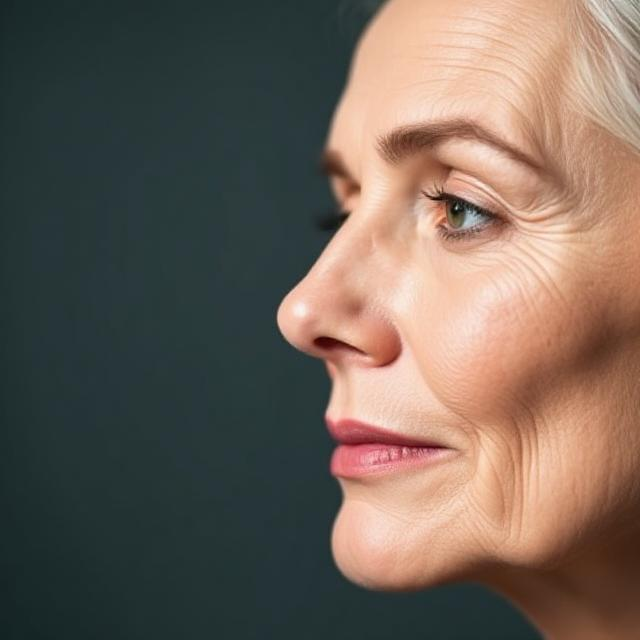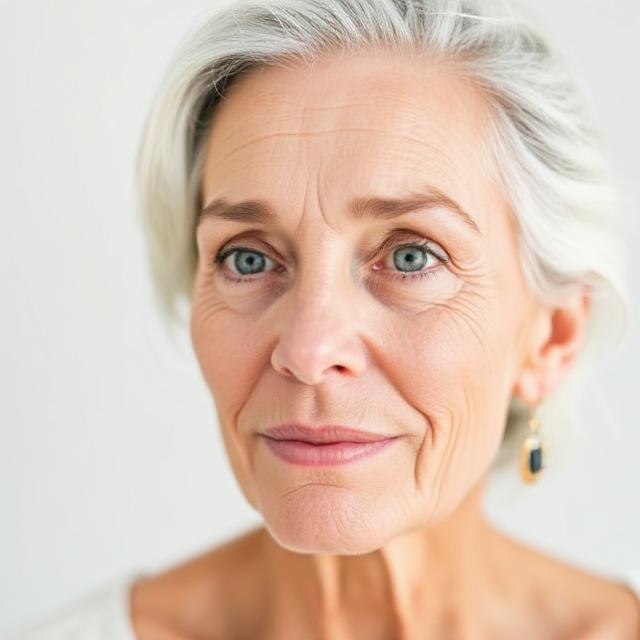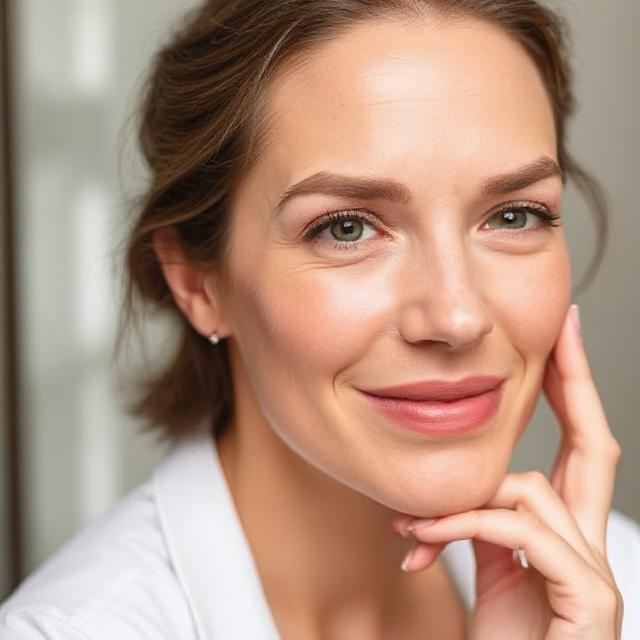As we age, our skin goes through several changes that require special attention. One of the most effective skincare ingredients for addressing aging skin concerns is retinol, a derivative of vitamin A. Retinol has been widely recognized for its ability to reduce fine lines, wrinkles, and uneven skin texture. However, if you’re over 50, incorporating retinol into your skincare routine can require a different approach than when you were younger. In this article, we will cover 10 essential things you should know about using retinol after 50 to maximize its benefits while protecting your skin.
1. Retinol Can Help Reduce Fine Lines and Wrinkles
One of the key reasons retinol is so popular in anti-aging skincare is its ability to stimulate collagen production. Collagen is a protein responsible for keeping the skin firm and plump, but production naturally decreases with age. As collagen production slows, wrinkles and fine lines start to appear. Retinol works by encouraging the turnover of skin cells, speeding up the skin’s natural exfoliation process and helping to reduce the appearance of fine lines and wrinkles.
After the age of 50, when collagen loss becomes more pronounced, retinol can help improve skin elasticity and promote a smoother, firmer appearance. However, it’s important to be patient, as the results may take several weeks to become visible. Start with lower concentrations and gradually increase as your skin builds tolerance.

2. Start Slowly to Avoid Irritation
While retinol can work wonders for the skin, it’s also known to be potent and can cause irritation, especially for more mature skin. If you’ve never used retinol before, or if you’re just starting to incorporate it after 50, it’s important to begin slowly. Introduce the product into your routine by applying it just once or twice a week. This allows your skin to build tolerance over time.
If irritation occurs, you can decrease the frequency further or use a gentler form of retinol like retinoid ester or retinaldehyde, which is less likely to cause irritation. With consistent use, you should be able to gradually increase the frequency and strength of your retinol product to see more noticeable results without overwhelming your skin.

3. Choose the Right Retinol Concentration
Not all retinol products are created equal, and the concentration of retinol in your product matters. Products range from over-the-counter formulations containing up to 1% retinol to prescription-strength formulas. For those over 50, it’s often a good idea to start with a lower concentration, such as 0.25% or 0.5%, as more mature skin may be more sensitive to the active ingredient.
Higher concentrations can lead to irritation, dryness, and redness, which can be especially challenging for aging skin that’s already thinner and more delicate. As your skin builds tolerance over time, you can gradually increase the concentration of retinol, but it’s always best to consult with a dermatologist for personalized recommendations.

4. Retinol Can Increase Skin Sensitivity to the Sun
One of the most important considerations when using retinol, particularly for those over 50, is the increased sensitivity it causes to the sun. Retinol accelerates skin cell turnover, which means fresh, new skin is more vulnerable to UV damage. This makes sunscreen an absolute necessity when incorporating retinol into your routine.
Always apply a broad-spectrum sunscreen with SPF 30 or higher every morning, even on cloudy days. Reapply throughout the day if you’re exposed to direct sunlight. To further protect your skin, you may want to limit your retinol use to nighttime applications to reduce sun exposure during the peak hours of skin sensitivity.

5. Moisturize to Combat Dryness and Irritation
Retinol can be drying, and as skin naturally becomes drier with age, this can sometimes be an issue. To help counteract dryness and irritation, it’s crucial to incorporate a rich moisturizer into your routine. Moisturizing after applying retinol not only helps to soothe any potential dryness but also supports the skin’s barrier, preventing further irritation.
Look for a moisturizer that contains hydrating ingredients like hyaluronic acid, ceramides, and glycerin. These ingredients help replenish moisture, lock it into the skin, and maintain a healthy skin barrier. If you find that your skin is excessively dry or flaky, consider using a richer moisturizer at night or applying it on top of your retinol to form a protective layer.

6. Be Aware of Potential Interactions with Other Skincare Ingredients
If you’re using other active ingredients in your skincare routine, it’s important to be cautious about potential interactions with retinol. For example, combining retinol with products containing alpha hydroxy acids (AHAs) or beta hydroxy acids (BHAs) can lead to over-exfoliation, which may result in irritation, redness, and peeling.
Vitamin C is another active ingredient that doesn’t always work well when used with retinol, as it can compromise the effectiveness of both products. To avoid irritation, consider using products with vitamin C and AHAs/BHAs in the morning, and reserve your retinol use for the evening. Additionally, avoid using retinol on the same nights as other harsh exfoliating treatments to minimize the risk of skin irritation.

7. Retinol Can Improve Skin Texture and Tone
In addition to reducing wrinkles, retinol can work wonders in improving skin texture and tone. As we age, skin cell turnover slows down, leading to dull, uneven skin. Retinol helps by promoting faster cell turnover, which encourages the shedding of dead skin cells and the production of new, healthy cells. This results in smoother, brighter skin that has an even tone.
For those over 50, retinol can be particularly beneficial in addressing age spots, hyperpigmentation, and uneven skin tone, which can be more common as we get older. Consistent use of retinol can gradually help fade dark spots, providing a more youthful, radiant complexion.
8. Retinol Is Not Just for the Face
While retinol is commonly used on the face, its benefits extend beyond just the facial skin. If you’re over 50, you may notice signs of aging on your neck, chest, and hands as well. Retinol can be safely applied to these areas to help reduce the appearance of wrinkles, age spots, and crepey skin.
However, when using retinol on these delicate areas, you should start slowly, as the skin on your neck and chest can be thinner and more sensitive than the skin on your face. Apply retinol to these areas only a few times per week initially and follow up with a good moisturizer to avoid irritation.

9. Retinol May Take Time to Show Results
Patience is key when using retinol, especially for individuals over 50. While some people may see immediate improvements in their skin texture and appearance, for others, it can take weeks or even months to see visible results. This is because retinol works gradually, stimulating collagen production and cell turnover, which takes time to show its full effects.
Don’t get discouraged if you don’t see dramatic changes immediately. Consistency is important, and over time, you’ll likely notice improvements in skin elasticity, tone, and the reduction of fine lines and wrinkles. Be patient with the process and allow your skin time to adjust to the product.

10. Consult with a Dermatologist for Personalized Guidance
As with any active ingredient, it’s always a good idea to consult with a dermatologist, particularly if you’re over 50 or have specific skin concerns. A dermatologist can help guide you on the appropriate strength of retinol to use, how often to apply it, and how to integrate it into your overall skincare routine.
They can also help you address other skin issues you may face, such as dryness, rosacea, or sensitivity. For those with more sensitive skin, your dermatologist may suggest starting with a prescription-grade retinoid that is less likely to cause irritation. Personalized guidance ensures that you get the maximum benefit from retinol without compromising your skin’s health.

Retinol is a powerhouse ingredient that can significantly improve the appearance of aging skin, but it’s essential to use it correctly—especially if you’re over 50. By starting slowly, choosing the right concentration, and protecting your skin from the sun, you can enjoy the many benefits that retinol has to offer. Whether you’re aiming to reduce wrinkles, improve skin texture, or address age spots, retinol can help rejuvenate your skin and restore its youthful glow. Remember, every individual’s skin is different, so take your time, be patient, and consult with a skincare professional to develop a routine that works best for you.



